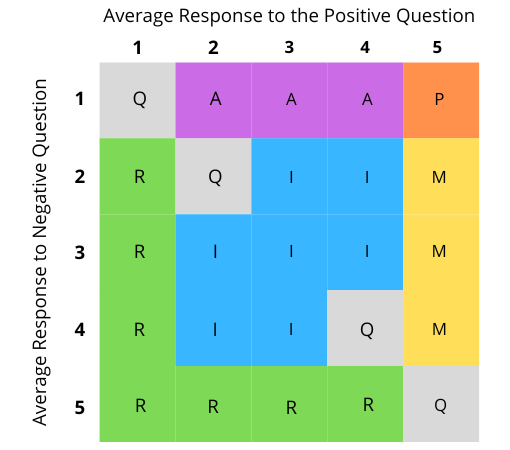Dating back to the 1980s, the Kano model assesses the impact of a product or service on customer satisfaction. As such, it enables teams to create products that meet customer preferences and produce lasting value through a framework for identifying, measuring, and prioritizing its most critical features.
The model guides companies looking to release an MVP (Minimal Viable Product) to the market quickly, helping them allocate appropriate resources and time to develop their most valuable assets. By following this approach, the product or service is more likely to fulfill user needs and deliver lasting value.
Also, the research data allows companies to predict which features will matter most to users, create a differentiated proposition, and stand out from the crowd.
Alongside this differentiator, Kano analysis helps CX and marketing teams understand consumer needs and preferences, highlighting how the model is much more than a product design tool.
How Does the Kano Model Work?
Created by Dr. Noriaki Kano in 1984, the Kano Model works by grouping product features based on how customers perceive them and how these features and attributes affect customer satisfaction.
These classifications help guide product, service, and experience design decisions, indicating which features are most pivotal to customer happiness.
The model divides product attributes into six categories to better understand satisfaction, as shown below.
How to Conduct a Kano Analysis?
When using the Kano model, companies carry out “Kano analysis”. To do so, follow this step-by-step guide.
Step 1:
Compile a list of customer requirements to test, including suggestions from focus groups with the design team and existing customers.
Step 2:
Draft a list of requirements and create a Kano questionnaire. This includes two questions – one positive and one negative – for each feature. Doing so helps to eliminate biased responses and inconsistencies. The positive question indicates the customer’s reaction to the possibility of attaining the potential requirement. The negative question reflects their response to the prospect of not attaining it.
As an example, let’s say that a footwear brand is developing a new pair of shoes, and the requirement is a high platform. The positive question could be: “If the platform is higher than two inches, how would you feel?” Meanwhile, the negative question could be: “If the platform is not higher than two inches, how would you feel?”
These questions always end with the phrase: “How would you feel?” Also, customers answer them on a scale of one to five, with one being “I like it that way” and five being “I dislike it that way”.
Step 3:
Create the Kano evaluation spreadsheet and conduct user interviews or surveys, finding the median customer response to both questions and creating two average scores for each requirement.
Based on these scores, the requirement filters into one of six categories, as highlighted in the following chart:

- Must-Have Features (M) – These are the most basic customer requirements. Companies that fail to provide this will fail to meet customer expectations on the most fundamental levels.
- Performance Features (P) – The more a customer gets these features, the more satisfied they are. Typically, customers appraise these features when assessing whether a product suits their needs.
- Attractive Features (A) – These are features that customers do not necessarily expect but delight customers when presented to them.
- Indifferent Features (I) – Customers are ambivalent about these features. Whether they are present or absent. They simply do not care.
- Reverse Features (R) – These features irritate customers if they are present and are best to avoid when aiming to enhance customer satisfaction.
- Questionable Features (Q) – Requirements in this category garner conflicting responses, making the findings impossible to action.
Pros and Cons of the Kano Model
Pros of the Kano model include:
- Prioritizing Customer Needs: The Kano model identifies critical customer preferences, enabling organizations to assess how they meet these in their current product and service designs. Doing so helps prioritize improvement opportunities.
- Increases Time Savings: Kano analysis prevents time wasted on developing attributes that have little influence over customer satisfaction and potential revenue gains.
- Reduces Costs: Using the Kano model, companies spend their resources more tactfully as they focus on developing features that appeal to the target audience.
- Increases Customer Satisfaction: Companies can spell out consumer needs, enabling a customer-centric approach to design that enhances satisfaction scores.
Cons of the Kano model include:
- Analyzing this data is not always easy, as spreadsheets often spiral out of control, resulting in a long pathway to accurate analysis.
- With a complex product that has many features, Kano surveys can become tedious for respondents. Also, after collating all the requirements, companies must craft two questions for each. This doubles the number of questions from a standard survey, which may increase dropout rates.
- It is sometimes difficult to describe features to customers in the form of a question. As a result, customer confusion is often high, impeding data accuracy.
However, despite these drawbacks, the Kano model continues to be a popular tool for product, service, and experience measurement and improvement. In most cases, this is due to its ability to anticipate customer needs and intent before releasing a new proposition. Meanwhile, it also provides businesses with actionable insights that they can implement immediately.







